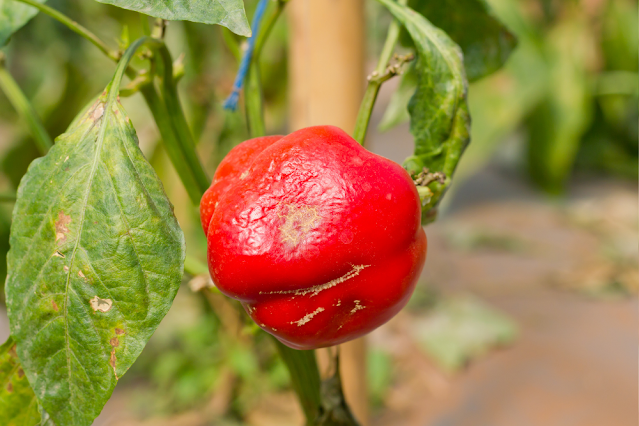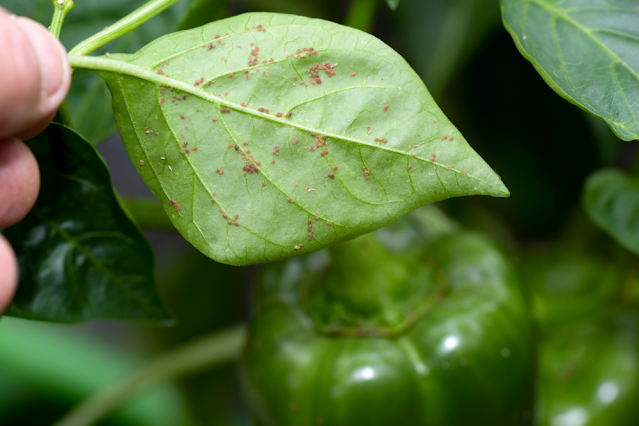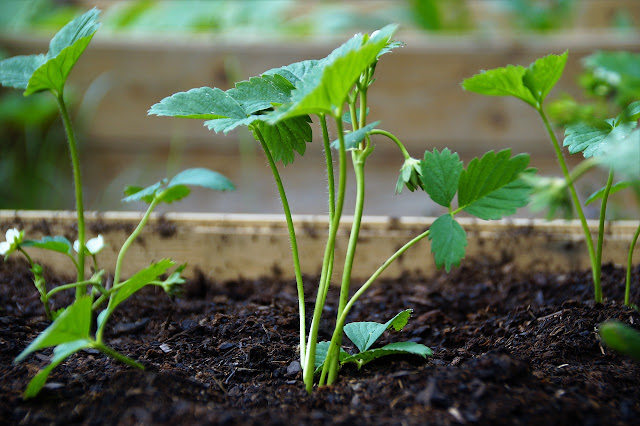Growing bell peppers isn't difficult, but the right temperature is important. While pepper plants are generally simple to care for, they do require extra attention while they are young. Pepper plant seedlings should always be started inside. To germinate, the seeds require the warmth of your home. Fill a seed tray halfway with seed starting soil or well-drainingpotting soil, then fill each container with one to three seeds. Place the tray in a warm area or use a warming pad to maintain a temperature of 70 to 90 degrees F (21-32 degrees C) — the warmer the better. You can cover the tray with plastic wrap if you find it useful.
Water droplets will develop on the plastic's underside to indicate that the young seeds have received enough water. It's time to offer them a drink if the drips have stopped forming. Within a few weeks, you should start to notice evidence of plant growth. When your young seedlings reach a height of a few inches, gently split them into little pots. Hardening off seedlings – putting them out throughout the day for a few hours as the weather warms – is a good way to get the little plants used to being outside as the weather warms. This, together with the occasional application of fertilizer, will strengthen them in preparation for the garden.
When your young seedlings reach a height of a few inches, gently split them into little pots. Hardening off seedlings – putting them out throughout the day for a few hours as the weather warms – is a good way to get the little plants used to being outside as the weather warms. This, together with the occasional application of fertilizer, will strengthen them in preparation for the garden.
Best Guide To Growing Bell Peppers.
Questions About Common Bell Peppers
Do peppers of various colors come from various plants?
Surprisingly, the green and red bell peppers that we usually see in stores are the same pepper; the red bell peppers have simply been left to grow on the vine longer, resulting in a different color and a higher Vitamin C content. Peppers that are older and sweeter are sweeter than those that are younger and greener.
However, bell peppers come in a variety of colors and shapes, including purple, yellow, orange, white, and brown.
Is there a difference between male and female peppers?
Female peppers have four bumps on the bottom, have more seeds, are sweeter, and are better for eating raw, according to a popular myth. Male peppers have three bumps on the bottom and are better for cooking, while female peppers have four bumps, have more seeds, are sweeter, and are better for eating raw. This isn't correct! Pepper fruits do not have a gender, and any visible differences between them are due to growth circumstances or variety.
Pepper Plant Diseases and Problems
Pepper Leaf Spot
Pepper leaf spot is a bacterial plant illness that may be found all over the world. The most prevalent weather conditions are rainy, humid, and warm. These are the circumstances under which the bacteria can propagate the most easily.
Because leaf spot is a bacterium, it may be transferred by contact, seeds, or soil. Use clean soil and irrigation practices to avoid splashing dirt on the leaves or cross-contamination.
Powdery Mildew
In peppers, powdery mildew can result in severe output decreases. The fungal pathogen infects a wide range of hosts and spreads by wind-blown spores. Powdery mildew on peppers may be controlled using a variety of approaches.
Damping off
Pythium spp. is the most common cause of damping-off. Seedlings that have been harmed by damping-off are unable to emerge or fall over, and die soon after. At the soil line, stems frequently have a black, shriveled section. Damping-off is usually restricted to places with poor drainage or compacted soil, but it can impact entire fields, especially in early plantings exposed to rain.
Blossom End Rot
Blossom-end rot in peppers can result in severe crop losses, especially early in the season. Blossom end rot is a dangerous tomato, pepper, cucumber, and eggplant disease caused by an environmental condition (not a fungal infection) that is most typically caused by uneven watering or calcium shortage. (These may be linked; uneven watering might obstruct calcium absorption.) Rapid growth, caused by too much fertilizer, excessive salt levels, or dryness, is a frequent garden "disease."
Bacterial Spot On Leaf
Bacterial soft rot is a dangerous fruit disease. Fruits that have been infected will crumble and hang like water-filled sacks. Rotating crops, utilizing raised beds to improve drainage, mulching to prevent soil water splash, and picking fruits carefully to avoid injuring are all examples of management practices.
Colorado Potato Beetle
These bugs aren't just attracted to potato plants; they also enjoy pepper plants. Potato bugs eat the leaves and can fully defoliate plants in extreme infestations. The adult potato beetles are black with yellow stripes, and the larvae are red with black heads, making them easily recognizable.
In the spring, adult beetles emerge, and females lay eggs in groups of two dozen or more. It's critical to take the adults and larvae off the plant as soon as you notice them. You may also use Bacillus thuringiensis to manage the larvae in your garden, but you must use Bt often for it to work.
Aphids
Aphids are one of the most prevalent pepper pests that gardeners have to deal with. These little, soft-bodied insects like to cling to the undersides of leaves and plant stems. Aphids are usually green or yellow, although they can also be red, pink, brown, or black. They like sucking the sap from plants and secreting honeydew, a sticky fluid that attracts insects and sooty fungi.Aphid infestations of a few hundred aphids are rarely a concern, but bigger infestations might pose major problems. Remove the aphid-infested sections of the plant and treat the leaves and any growing fruit with neem oil. You may also use powerful water jets to swat these pests off your plants.
Pepper Weevil
These pests like to eat the pepper plant's leaves, particularly the buds and young fruits. The fruits grow deformed and discolored as the larvae eat on them. The plant's buds and fruits eventually fall off.
These pests breed rapidly, resulting in numerous generations each year. This makes managing these pests difficult since you must destroy them all, including the eggs, or they will return.
To get rid of pepper weevils, start by removing sick plants, and make sure any dropped fruits on the soil surface are removed as well. Spraying plants with pyrethrin-based pesticides is an efficient way to get rid of pepper weevils.
Leaf Miners
Leaf Miners are tiny flies that eat or deposit eggs by puncturing the top leaf surface as adults. The yellow and black larvae devour the surface of the leaf, producing a twisted mine that lowers photosynthetic area and increases disease entry sites.
While checking the fields for leaf miners is a good option, parasitic wasps can act as a natural opponent and destroy a lot of them. Several pesticides have also been developed to target these pest populations.




.png)







Your website seems to have been hacked - only when I use my iPhone I get immediately directed to an app for sale. I couldn't look at your blog from my iPhone at all.
ReplyDelete